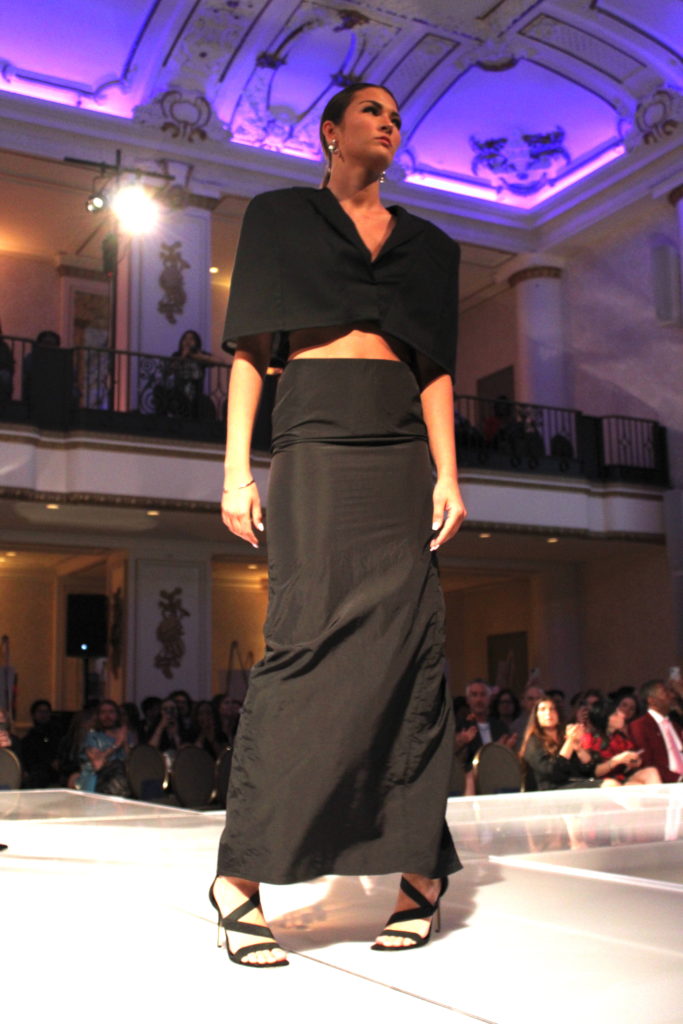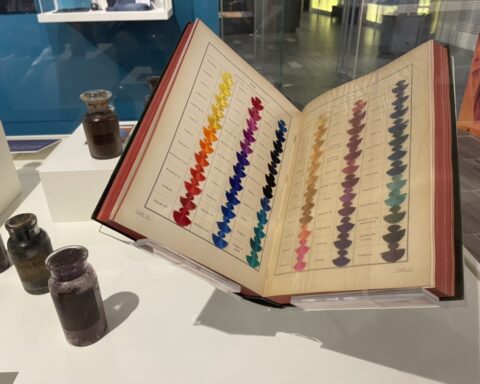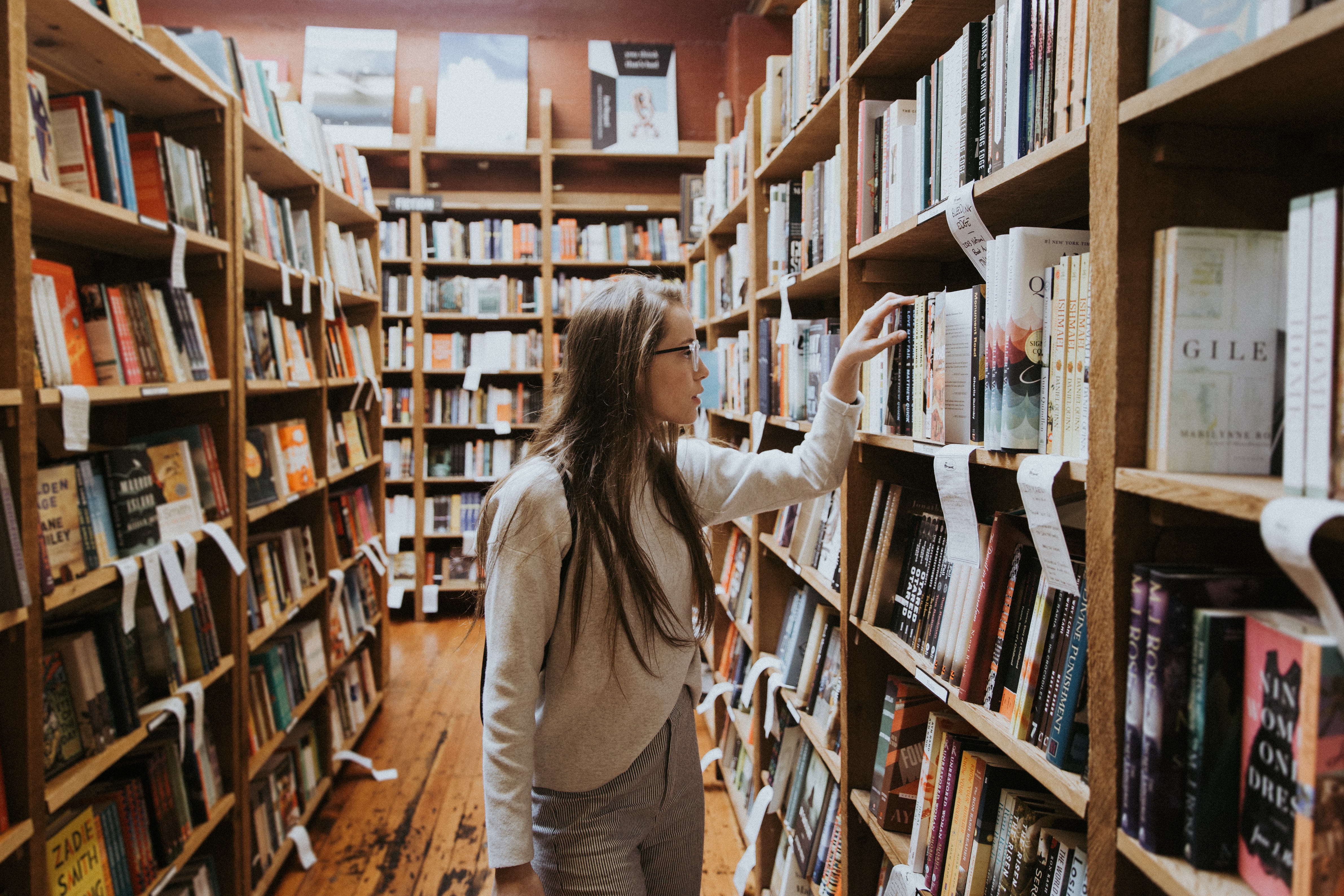
First, a soft-pink strapless minidress with a front constructed to resemble a bow. Then a cream-colored wide-sleeved blazer paired with soft-pink pants. The last look was a cream-colored silk slip dress with what appeared to be makeshift sleeves. A transparent white bow sat on the face of the three models as each headed down the plus-shaped runway situated amidst the grandeur of The Bellevue Hotel in Center City.
Natalia Quinones’s three looks for her “Adornezza” collection – shown as a part of the 2023 Drexel Fashion Show on Saturday, June 10, 2023 – created a sense of romance, nostalgia, and longing in the 3 minutes that her looks appeared on the runway.


Later on in Drexel’s fashion show, Sehlah Ahmad sent out four looks whose jewel work was as stunning and intricate as any that you might see in Paris, Beirut, or Mumbai. Of particular note was the look above.
One couldn’t help but to think during the show, however, that the majority of these extraordinarily talented students – of which there were 34 that showed the final collections of their respective academic careers – were likely going to leave the city of Philadelphia and take their well-honed fashion skill sets with them. And that is truly unfortunate.
But why are they leaving? Well, what else would anyone have them do, considering that there is almost nowhere for them to go to continue building their professional skills in Philadelphia?
Assuming that a student wants to continue on the fashion design track, strengthen their skills by working for another company, and work inside of Philadelphia city limits, the only larger-scale company with which to find work is URBN, which owns Anthropologie, Free People, Urban Outfitters, and a few others. And URBN has partnerships with Drexel such as this one, but URBN can’t save the entire city’s fashion design graduate population — which includes not only students from Drexel University but students from the Moore College Of Art & Design, Thomas Jefferson University, and the independently-run MADE Institute — nor should they have to.
Surely there are a few smaller, independent companies that graduating students could tap for employment opportunities, but at this point, there is no contest between Philadelphia and cities like New York, Los Angeles, Paris, Tokyo, and many others.
Now, if a graduate wanted to start his or her own company, that’s another story. There are quite a few designers and brands that have successfully done this in Philadelphia and achieved widespread acclaim – look to brands like Grant Blvd, Printfresh, and Lobo Mau for great examples. This is the most viable path for a design graduate that may choose to stay in the city of Philadelphia to work – but that opens up a host of other issues, one of them being that of obtaining suppliers. If a designer wants to create their brand in Philadelphia from start to finish, the city does not offer a real chance to do that. It’ll become necessary at some point to build connections with other cities to fulfill basic clothing orders. Perhaps that’s more a reality with many American cities other than just Philadelphia, however.
But none of this addresses how Philadelphia got to this point of not fostering an environment that can retain more of its fashion graduates. We’ve got three points that we can address:

© 2023 Manic Metallic
Losing Its Fashion Graduates Is A Consequence Of Philadelphia Having A Splintered Fashion Scene That Lacks Any Sense Of Cohesion
Philadelphia is a city that contains so much design talent, so many postsecondary educational institutions with strong intellectual prowesses, and such a diverse independent design scene that it makes little sense why the city’s fashion industry organizations find it so difficult to remove their invisible walls and work together in a more connected way.
Sure, we have the Philadelphia Fashion Incubator doing a lot of useful work in the city’s fashion scene — for example, the organization mentioned recently that it is hosting a Drexel graduate for a summer apprenticeship. Fashion Group International’s Philadelphia chapter (disclosure: I am a board member of the organization) frequently hosts events designed to bring together fashion industry professionals and recently partnered with FABSCRAP – a sustainable fashion company – on a group volunteer initiative. The Philadelphia Fashion & Garment Industry Task Force (PFGITF) has made partnerships with local government officials to try to advocate for Philadelphia’s fashion industry. And, of course, there is Philadelphia Fashion Week, which has staged a showing numerous times since its inception in 2006.
There may be others that this article doesn’t cover, but these are the city’s primary fashion organizations. All have missions that contribute to building Philadelphia’s stature in fashion — and many have partnered in some way with each other on an individual basis.
With so many entities that state their devotion to uplifting the Philadelphia fashion industry, and for all of the talk of potential collaborations, the city’s fashion scene has little to show for it with regard to creating an ecosystem that can retain fashion talent and with regard to boosting the overall profile of those that choose to remain in Philadelphia.
What Philadelphia needs is for every one of these organizations – and others not mentioned here – to be collaborating and partnering with each other on a more regular basis. Additionally, the people in these organizations need to be more open to working with individual fashion industry professionals that are looking to build their careers and/or their companies. These two suggestions will go a long way toward creating a stronger overall fashion ecosystem that will become more attractive to fashion graduates, making it easier to retain them in the city after they complete their education.

© 2023 Manic Metallic
The Lack Of Media Devoted To Fashion Is A Hindrance To Building Excitement and Awareness For Philadelphia’s Fashion Industry & Its Professionals
Philadelphia has very few – if any – fashion media organizations devoted specifically to getting the general public and potential fashion industry professionals (i.e: students under 18, college students, and others that may hope to enter the fashion industry) excited about what the city’s fashion industry has to offer and informed about who the industry’s primary players are.
Have individual industry figures been featured on the news on television, in the news in outlets like the Philadelphia Inquirer, or on other media sources like podcasts and radio shows? Yes, of course. But those outlets are not devoted to fashion as its own industry. The closest that the city gets is the Style column in the Inquirer, but one section in a newspaper isn’t going to get the city’s talented fashion professionals the attention that they need and deserve.
And if you’re a current fashion student or graduate thinking of this issue, you’re likely left wondering what way would there be for you to get exposure for your work in order to be able to have a profitable career in Philadelphia. You’d find that there are few answers here, so you’d head elsewhere to a city that has the infrastructure to support your success.
(You might wonder, at this point, why we did not include ourselves in this media appraisal. While Manic Metallic is a fashion media company based in Philadelphia, our work is not solely devoted to covering Philadelphia’s fashion industry. We have covered individual instances such as exhibits, fashion weeks, and select events and individuals around the city — but we situate this work alongside our national and international audio, written, and video fashion coverage, as we have a proportionally large base nationally and internationally.)

Philadelphia’s Fashion Industry Power Seems To Prioritize Suburban Areas – And This Can Have Mixed Results For The City
Philadelphia lost a healthy portion of its high-end fashion retail options during the heart of the pandemic. Various reasons have been passed around — a rising crime rate, the high city wage tax, the movement of individuals with more money to the suburbs, etc. — but whichever one you choose to believe, many that are in fashion and that have been living in the city for longer than a couple of years can attest to the fact that the suburbs seem to be playing a larger role in Philadelphia’s fashion industry. Yes, the city plays host to Joan Shepp and Boyd’s — two excellent retail institutions located in Rittenhouse Square — but the most widely-regarded luxury shopping location in Philadelphia is in…King of Prussia. Yes, the luxury shopping mall whose name is the exact same as the suburban town itself.
Recently, multiple fashion organizations based in the city have been holding fashion exhibits, networking events, and panel discussions outside of Philadelphia. These are the types of events that would contribute to a much stronger and more cohesive fashion culture were they held inside of Philadelphia city limits, and the fact that many of these types of events are being held outside of the city poses a couple of problems:
- People in the city of Philadelphia are then tasked with traveling to these events. This is a very time-prohibitive thing to undertake: consider that it might take anywhere from 1-1.5 hours to get [from the city] to the event (depending on whether or not you’re taking public transit), 1.5-2 hours for the event itself, and 1-1.5 hours to get back into the city. Fashion organizations that host their events outside the city might well get a few people to come to these events, but I have spoken to many in the industry here that are not willing to make that trip.
- Philadelphia and its fashion industry both lose potential money and exposure when fashion events that could easily be held in the city are held in the suburbs. Philadelphia businesses that could host events lose money to suburban locations that then make a profit. Philadelphia fashion industry professionals are tasked with traveling to the suburbs for relationship-building and for events that would presumably further their careers. This tells the fashion professionals of this city that Philadelphia — the sixth-largest city in the United States and the second-largest city on the East Coast — does not have the resources to support their careers and that they must go to suburban centers in order to move ahead.
Many young adults — especially emerging fashion graduates — want to work in cities and build their careers in cities. Fashion organizations should truly reconsider the locations of their events and work to serve Philadelphia city professionals more.
When we look at all of the above issues, where does that put these students at institutions like Drexel that have the potential to be fashion industry stars one day? Philadelphia — its fashion industry, in particular — needs to really ask itself if it can afford to keep losing talent to places like New York, Tokyo, London, and Milan. For a city that has some of the top institutions of higher learning in the entire country — and one of the top fashion colleges — retaining this fashion talent is crucial in its quest to be competitive on fashion’s world stage.
To subscribe to Manic Metallic‘s Substack newsletter, click here. To follow us on Bluesky, click here.




